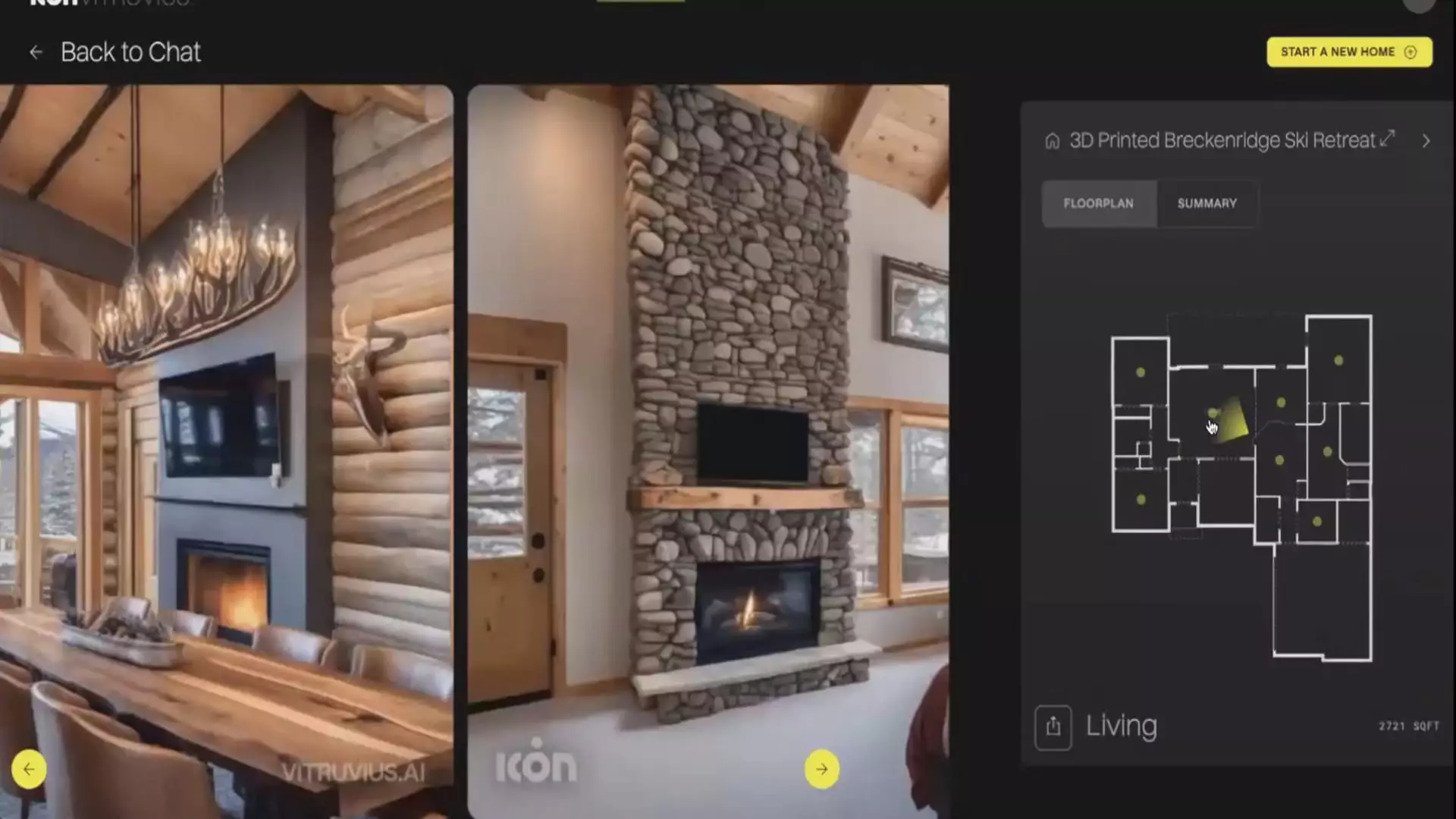Artificial intelligence has made its way into the housing industry, particularly in the field of architecture. ICON, the company behind the first fully 3D-printed housing developments in the U.S., has introduced Vitruvius, an AI program designed to assist consumers in creating custom home designs online. This innovative technology aims to streamline the design process, making it more cost-effective and efficient. Jason Ballard, the CEO of ICON, envisions Vitruvius as a comprehensive tool that guides users from conceptualization to construction, offering everything from construction documents to robotic instructions.
Vitruvius sets itself apart by its ability to access a vast database of designs and possibilities that it has encountered. Trained on building codes, construction methods, and structural engineering principles, the AI program can generate designs tailored to the user’s preferences and specifications. By incorporating knowledge from past projects, Vitruvius offers users three potential home designs based on their input, taking into account factors such as location, size, architectural style, and amenities. Moreover, the program can depict the design in various forms, including 3D-printed models or styles inspired by renowned architects.
The Future of AI in Architecture
While AI technology like Vitruvius has the potential to revolutionize the architectural design process, it raises questions about its implications for the industry. Some architects and real estate agents believe that AI will serve as a valuable tool for enhancing efficiency and reducing costs. However, there are concerns about the role of human creativity and expertise in the design process. While AI can generate innovative ideas and streamline workflows, it may not fully replace the unique insights and skills that architects bring to the table.
One of the key advantages of AI in architecture is its potential to democratize the design process and make architecture more accessible. In the context of affordable housing projects, where cost constraints often limit design options, AI tools like Vitruvius offer a way to balance affordability with aesthetic quality. By providing affordable housing projects with access to sophisticated design solutions, AI can help improve the quality of living spaces for underserved communities. As Jason Ballard notes, every housing project, regardless of budget, deserves to embody beauty and dignity, and AI tools can make this vision a reality.
The integration of AI technology in architecture represents a significant step towards transforming the way buildings are designed and constructed. While AI tools like Vitruvius offer numerous benefits in terms of efficiency, cost-effectiveness, and accessibility, they also pose challenges in terms of creativity and human intervention. As the architectural industry continues to evolve, it will be essential to strike a balance between leveraging AI technology and preserving the unique contributions of human architects. Ultimately, the widespread adoption of AI in architecture has the potential to democratize design, foster innovation, and create more inclusive and sustainable built environments for future generations.

